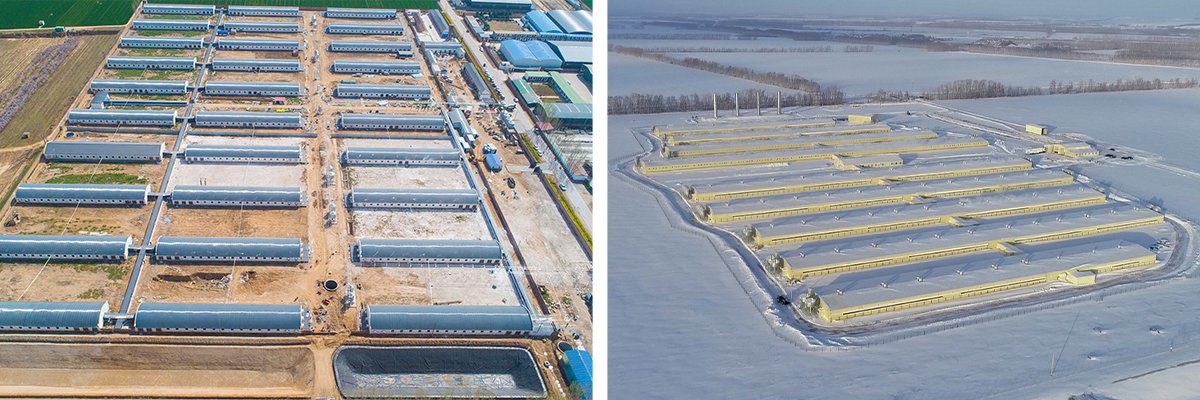1. The art of pig farm site selection
The preferred pig farm location not only needs to meet the natural conditions of good ventilation and sufficient sunshine, but also must comply with the following key specifications to ensure smooth approval procedures for land management and animal epidemic prevention:
Ensure that it is not a prohibited breeding area: Before determining the address, be sure to consult the local Animal Husbandry Bureau or Environmental Protection Bureau to confirm whether the selected site is located in a prohibited breeding area to avoid unnecessary investment losses.
Reasonable geographical location: Pig farms should be located at least 500 meters away from provincial roads, villages, and rivers to ensure ecological balance and avoid environmental pollution.
Stay away from other agricultural facilities: Keep more than 1,000 meters away from other farms and slaughterhouses to avoid cross-contamination.
Not located in the basic farmland protection zone: This item needs to be understood in detail with the land management department to ensure the legality of land use.

2. Process of applying for relevant documents
In order to operate a pig farm legally, the following are some documents and procedures that must be completed:
Land registration: Obtain the land registration form through the land management department or the Animal Husbandry Bureau, and approve and stamp it step by step in accordance with regulations.
Environmental protection filing and registration: Under the current policy, places that raise less than 5,000 pigs only need to apply for environmental protection filing and registration. This includes a series of environmental protection measures such as compliance with distance restrictions, construction of environmental protection facilities, and sewage treatment.
Animal Epidemic Prevention Conditions Certificate: This certificate must be obtained from the animal husbandry department and must meet many conditions including site disinfection, stall spacing, separation of production and living areas, and a sound management system and recording ledger.
The preferred pig farm location not only needs to meet the natural conditions of good ventilation and sufficient sunshine, but also must comply with the following key specifications to ensure smooth approval procedures for land management and animal epidemic prevention:
Ensure that it is not a prohibited breeding area: Before determining the address, be sure to consult the local Animal Husbandry Bureau or Environmental Protection Bureau to confirm whether the selected site is located in a prohibited breeding area to avoid unnecessary investment losses.
Reasonable geographical location: Pig farms should be located at least 500 meters away from provincial roads, villages, and rivers to ensure ecological balance and avoid environmental pollution.
Stay away from other agricultural facilities: Keep more than 1,000 meters away from other farms and slaughterhouses to avoid cross-contamination.
Not located in the basic farmland protection zone: This item needs to be understood in detail with the land management department to ensure the legality of land use.

2. Process of applying for relevant documents
In order to operate a pig farm legally, the following are some documents and procedures that must be completed:
Land registration: Obtain the land registration form through the land management department or the Animal Husbandry Bureau, and approve and stamp it step by step in accordance with regulations.
Environmental protection filing and registration: Under the current policy, places that raise less than 5,000 pigs only need to apply for environmental protection filing and registration. This includes a series of environmental protection measures such as compliance with distance restrictions, construction of environmental protection facilities, and sewage treatment.
Animal Epidemic Prevention Conditions Certificate: This certificate must be obtained from the animal husbandry department and must meet many conditions including site disinfection, stall spacing, separation of production and living areas, and a sound management system and recording ledger.

